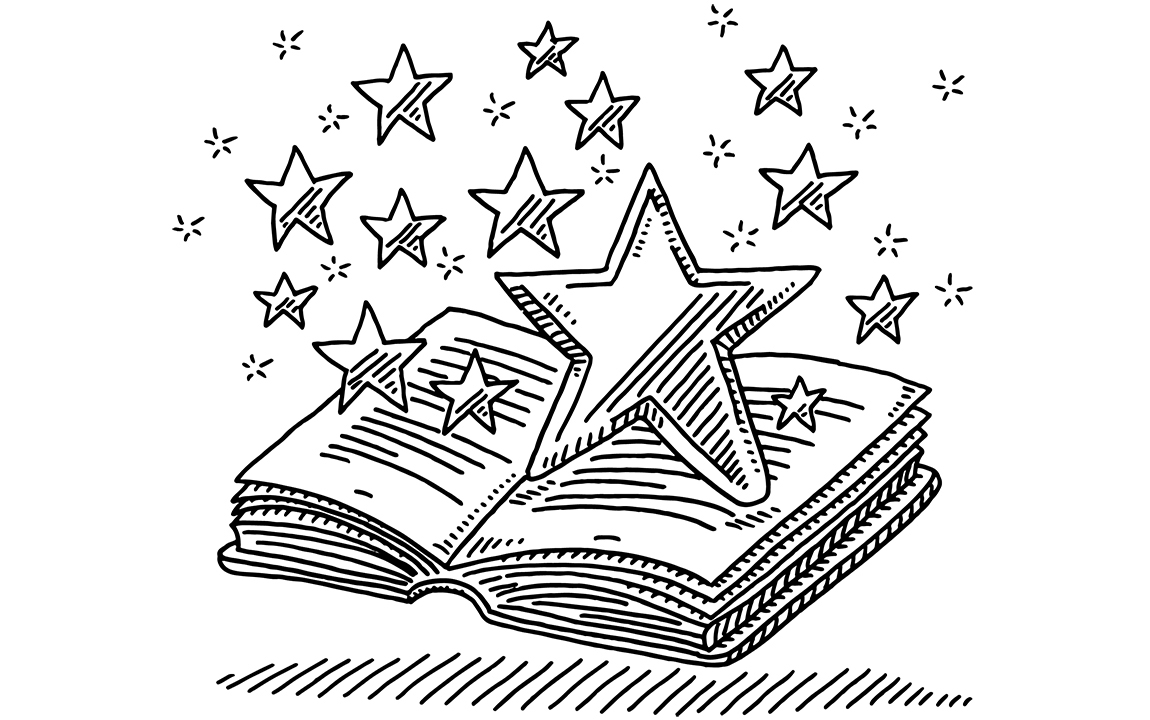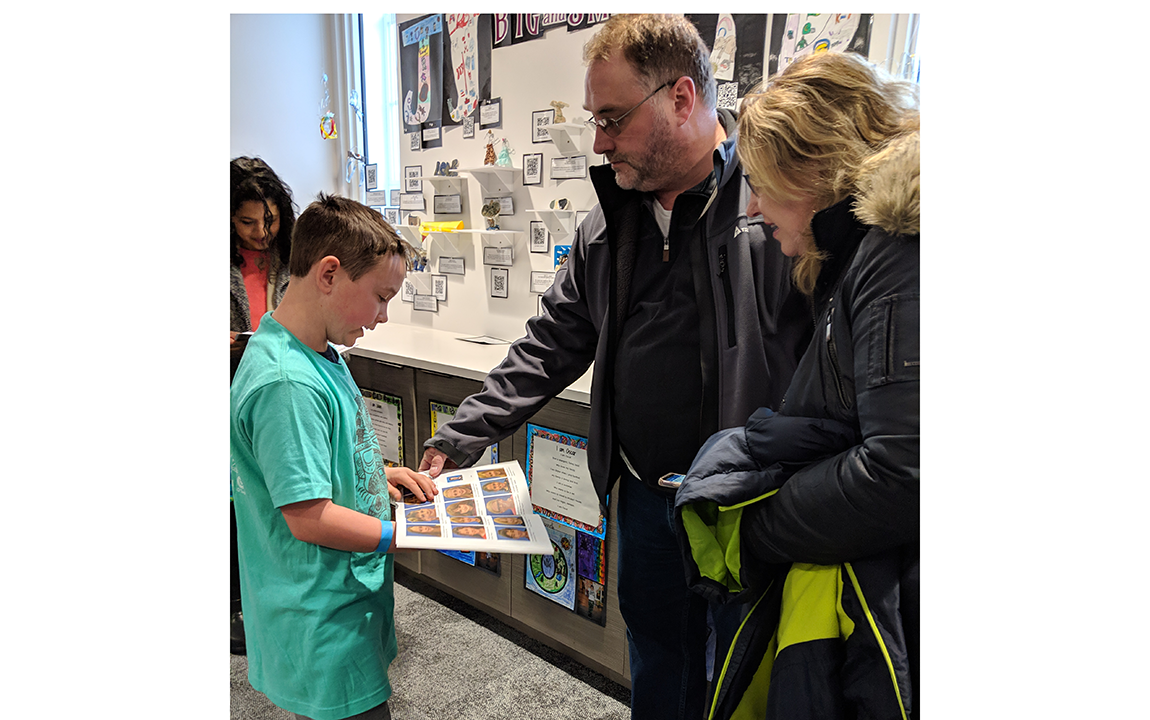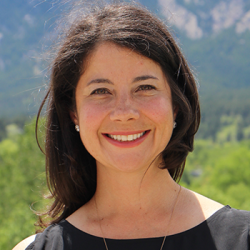
Telling stories is a part of the human experience. It is how we share our experiences, learn from, and connect to one another. Our stories can document how we actively contribute to making our schools, neighborhoods, cities, and counties a better place.
The idea of sharing stories as a student’s public product came from a professional learning structure that was piloted this last year. In December 2017, I met with one of our rockstar PBL teachers, Sara Nelson of University Hill Elementary, to ask her for ideas on what type of professional learning might best support our teachers who were further down their PBL path. (Part of my job at the district level is to support teachers in the implementation of Innovative Teaching and Learning practices.) Sara suggested that her ideal PD structure would be to work with a team of experienced and passionate PBL teachers to co-design and implement a 2nd grade project--a “dream team” from schools across our district who could lean on and learn with each other.
I thought this was a brilliant idea, so I asked other 2nd grade teachers who fit this description if they would be interested. Eventually, we had a core group of six teachers from four schools* (impacting more than 400 students!) who agreed to meet once over the summer, and then monthly, to give this dream team cohort a try.
Deciding on Learning Goals
We met for the first time in July and realized that we actually had teachers who were teaching standards from 1st, 2nd, and 3rd grade. Because of this complication, we had to find a “lead” content area that had a thru line of standards across all three grade levels. The group determined fairly quickly that the theme of “Community” in our social studies standards does just that, and so we began brainstorming about a project that could align under a common driving question, but also have room and space for the instruction to be differentiated based on each grade level’s specific content standards.
For example, from the social studies content standards, our first graders were asked to identify similarities and differences between themselves and others. Our second graders had to identify historical sources and utilize the tools of a historian by giving examples of people and events, and developments that brought changes to the community. Our third graders had to analyze how different cultures have impacted and continue to impact Colorado. In terms of literacy content standards, students in 1st grade were writing texts that carried meaning, and gathering information from a variety of sources. Our 2nd grade students worked on writing informative/ explanatory texts in which they introduce a topic, use facts and definitions to develop points, and provide a concluding statement or section. The 3rd graders wrote informative/explanatory texts to examine a topic and convey ideas and information clearly.

The Project Idea Takes Shape
Inspired by the “Little Humans of New York” book and the “Humans of New York” podcast, our imaginations were captured by the idea of storytelling, and the “Humans of Boulder Valley, Big and Small” project was born. We saw it as a great opportunity to develop students’ literacy skills in both reading and writing autobiographies and biographies.
Our driving question was, “How can we celebrate the stories of our community and use them to inspire us to be change makers?” Since the four schools were each located in a different city, it was an enticing idea to see what made our communities similar and unique.
The project was designed between July and November, when it was launched. It was wrapped up at the end of February of 2019.
Public Product: Published Book and Community Event
For our public product, each of our schools produced a professional quality book (tip: The company Blurb supported us well with this product!). The book included both an autobiography that told each student’s own story and connection to the community and a biography of a community member. Some of the schools also chose to create maps of their communities, and/or create an artifact that represented their community. A collaborative video about change makers (set to the song “With My Own Two Hands” by Jack Johnson) was produced with support from high school students as a mini-project for their media production class.
In order to really provide a public audience that honored the scope and scale of this big of a project, we were fortunate enough to engage with the Museum of Boulder as a community partner. The Museum agreed to host a “Humans of Boulder Valley” exhibit from March 2nd to April 3rd, and let families attend opening day for free.
A Huge Success
The project was a huge success! The quality and depth of learning demonstrated by our smallest learners in the district was impressive. More than 2,000 people visited the museum during the time the exhibit was up, and over 1,000 people visited the exhibit space on opening day, and The Boulder Daily Camera wrote a great article about it. Most importantly, our students felt empowered by the experience, knowing their stories and contributions to their respective communities were shared in a REAL museum exhibit. We also partnered with Impact on Education (our educational foundation for the district), and Growing Up Boulder, out of the University of Colorado, which proved to be a value add for all of the organizations in alignment to their missions/values/projects.
Although this project was certainly done on a big scale, the basic idea behind it, students telling the stories of their communities and becoming change makers, is transferable to any community setting and could be scaled to almost any grade level. It is projects like this one that inspire me and reinforce how PBL is a great structure from moving students from engagement to empowerment via authentic learning experiences, while deeply teaching key academic content and success skills!
*Thanks to Sara Nelson, Katie Gambardella, Katie Roberts, Tami Attard, Tiffany Hampton, Sami Huck, their colleagues and building leaders, their students, and their schools (University Hill Elementary, Ryan Elementary, Kohl Elementary, and Meadowlark School) for their numerous hours of hard work that went into our Dream Team project! I’m so grateful for you and your leadership and for giving our littlest humans such a powerful opportunity to tell their stories.

